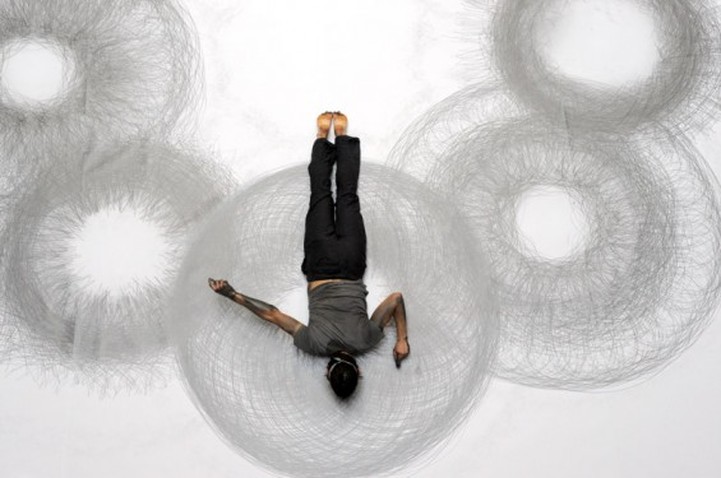PSYCHOLOGY
WHY YOU ARE ANXIOUSALL THE TIMEAnxiety is necessary for survival, but it can run out of control. Here is what you can do to offset it ... |
High anxiety: Kim Novak and James Stewart in Vertigo (1958). Photograph: Paramount/Allstar
There is no magic bullet for anxiety. We know this, and yet if we have a propensity for the bowel-shaking kind of anxiety that fits within the “disordered” bracket, a cure is exactly what we pray for. At the peaks of our discomfort, we are desperate for something, anything, to take the feeling away.
There are, however, many ways of treating anxiety by developing strategies for managing it as part of a highly functional, productive life. But there cannot be an absolute cure. Why? Because it is something every single human being experiences. In people with disordered anxiety – that is, anxiety that significantly impacts day-to-day life – the expected fear response becomes overactive. We react not just to immediate perceived “normal” dangers, but to thoughts and memories. It can feel like we are anxious about nothing and everything at the same time and that the feelings will never go away. That helplessness can be assuaged by gaining knowledge of and examining the changing states of the brain. With help, an anxious person can understand what is happening and begin to see their ability to adapt to and challenge their thinking. It’s important for them to understand that the brain is capable of adapting all the time from the moment we are born and that no mental state is fixed. Our primitive fight-or-flight response holds an evolutionary function for us to stay alive, and it springs into action the minute we leave our mother’s body. The British psychoanalyst Wilfred Bion suggested that we all suffer trauma by virtue of being born. We experience the physical and psychic separation from our mother. In the womb, a baby can feel the edge of its world. When it reaches out, there is a membrane. Being born takes that away and we are thrust into a cold, edgeless, unknown abyss. The Moro reflex is a remarkable illustration of that adjustment. When we are infants our minds respond to physical “states” before proper thinking comes into being, but we stop doing it after about six months. Our brains learn, quickly, that a change in position doesn’t mean we are going to fall and die. We can see that change happening in real time. When we are children, new neural pathways are formed and strengthened every day as we learn to keep ourselves out of danger by avoiding heights, sharp things or flames. We develop coping mechanisms and resilience. Our individual fear responses are adapting. When we are adults, our resilience against the infinite stressors of the world is the product of our genes and our experiences. But it’s the same brain we are carrying around. No one knows exactly why one person develops disordered anxiety over another – only that many factors are at play, genetic and environmental. We can, however, not only teach the brain to react differently, but also change its physical structure – and neuroscientific research confirms this empirically. Practising mindfulness and regular exercise do both of these things. Thousands of studies and brain-imaging techniques tell us that as fact. To be anxious a lot of the time, though, is to feel stuck, as if science and evidence don’t apply to our flavour of suffering. So we must also recognise that it is a process – it never happens overnight. The brain learns to behave in certain ways, which means it can relearn different ways. The biggest obstacle is believing that it applies to you, the individual. ________ Anxiety for Beginners: a Personal Investigation by Eleanor Morgan (published by Pan Macmillan at £16.99) is out now. To order a copy for £12.99, go to bookshop.theguardian.com |
Vertical Divider
|
5things
WEEKLY BULLETINA weekly bulletin of the 5 most recommended articles, challenging ideas and interesting new things in Psychology from
NIKOS MARINOS CONSULTANCY delivered straight to your inbox, every Monday. |


